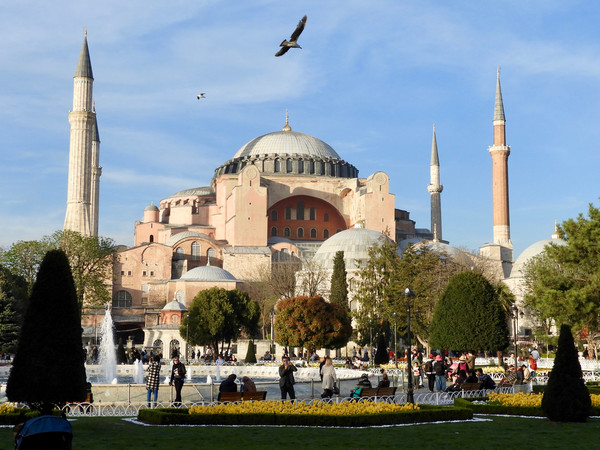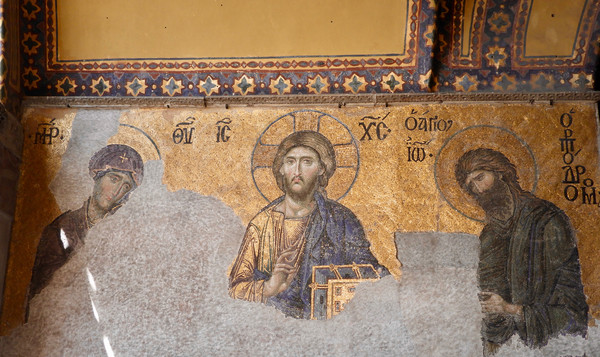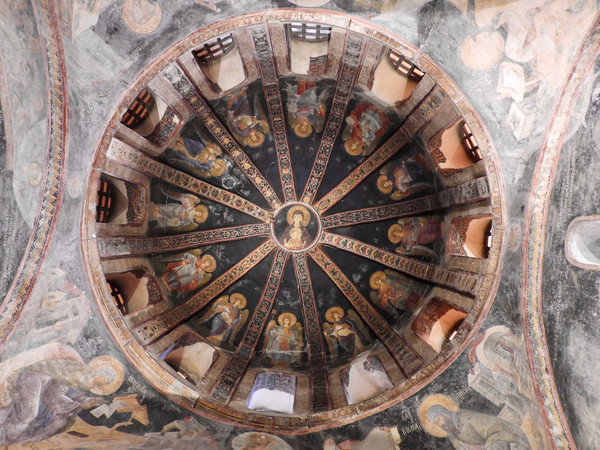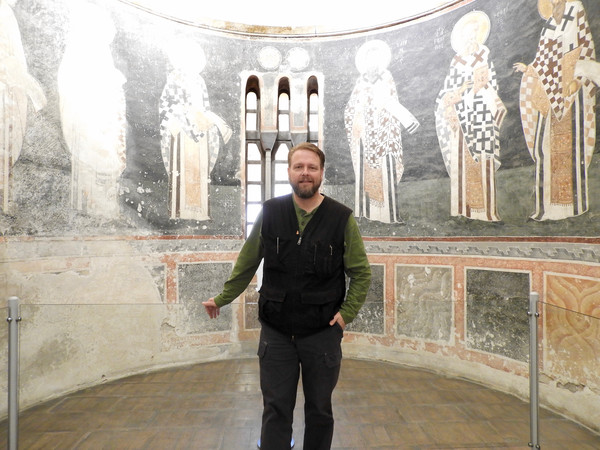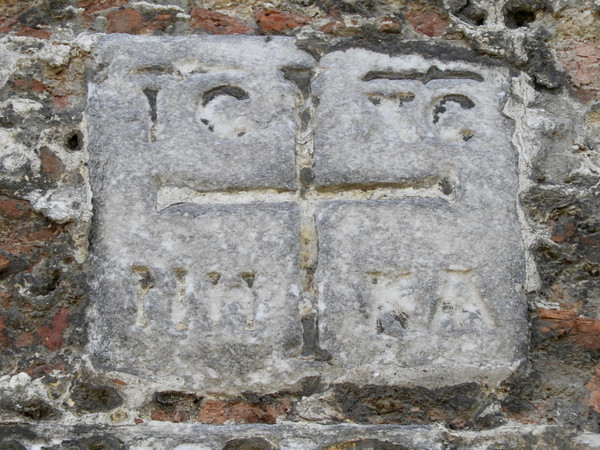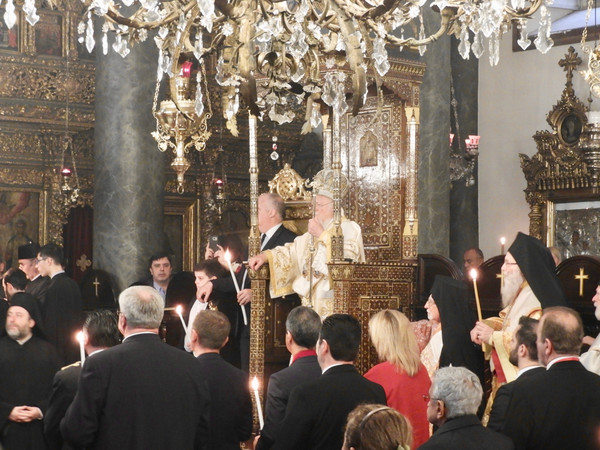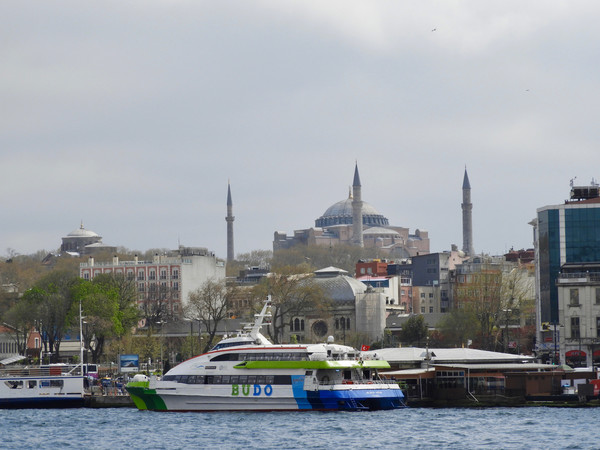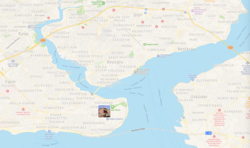
Many think of Rome as the prominent Christian city after the time of Constantine the Great’s conversion to Christianity, but the emperor actually moved the seat of government–and the influence of the church with it–to the Eastern city of Byzantium where it was renamed in Constantine’s honor. The location was geographically significant then, just as today, since Byzantium/Constantinople/Istanbul straddles the Bosporus Strait with Europe on the western side and Asia on the eastern shore.
My trip was personal and not work-related. When I was invited to write about the experience here on the Accordance Blog, I was not asked to tie anything directly to Accordance, but I cannot help mentioning one of our titles, the Accordance Bible Lands PhotoGuide: Turkey Collection. I’ve used our various PhotoGuides for years, usually to find an image to illustrate a Bible passage I was teaching or find out more information about a particular location in the Bible. However, I’d never thought of using one of them for a travel guide before–but it was perfect! The section on “Byzantium” was so well documented that I knew well before I arrived in Istanbul what to look for and which places I needed to visit. I read through that section multiple times before the trip and even while there.
Okay, enough of the commercial and on to some of the highlights of my trip. Also, pardon my insistence on usually calling the city Constantinople instead of the modern Istanbul.
No one can say they’ve seen Constantinople without visiting the Hagia Sophia (“Holy Wisdom”). Although the idea of a “megachurch” may seem like a modern phenomenon, no modern building can really compare to the Hagia Sophia, which stood as the largest church and one of the largest buildings in the world for nearly a millennia. It is so massive that the Statue of Liberty could stand upright in it with room to spare. According to one source, at one time there were nearly 600 church staff members (to use a modern designation): “80 priests, 150 deacons, 40 deaconesses, 60 subdeacons, 160 readers, 25 chanters, 75 doorkeepers.”
Above: the massive Hagia Sophia, completed in AD 537 during the rule of Emperor Justinian I. The four surrounding minarets were added after the church was converted to a mosque following the Ottoman Invasion in 1453. The Hagia Sophia became a national museum in 1935.
The building itself, completed in AD 537 and the third church on the site, is an architectural marvel having survived numerous major earthquakes over the last millennia and a half (see the Nova episode, “Hagia Sophia: Istanbul’s Mystery”). It is a dome on top of arches, on top of a buttressed cube. If you normally associate domed worship buildings with mosques, you can trace the connection to the Hagia Sophia. When the Ottomans invaded in 1453, they were so enamored with the Hagia Sophia that they made its basic architectural design the basis for their mosques.
Above: Deësis mosaic in upper gallery of the Hagia Sophia, featuring Mary, Jesus Christ, and John the Baptist.
After the Ottoman Invasion, the Hagia Sophia was converted into a mosque. Fortunately, rather than destroying the mosaics that decorated the interior of the church, the Ottomans had them plastered over, thus preserving them for modern visitors to see, now that the building is neither a church nor a mosque, but a museum.
Above: Virgin and Christ Child, surrounded by the Heavenly Hosts in the Parecclesion dome of the Chora Church.
We also visited the Church of the Holy Savior in Chora (often referred to as simply the “Chora Church”). This was another Byzantine church that became a mosque under the Ottomans, but it was converted into a museum in the 1940s, and the walls and ceilings are covered in Christian mosaics and frescos.
Above: I felt like I was “surrounded by a great cloud of witnesses” (Heb 12:1) the entire time I was in the Chora Church. In particular, here I stand in front of a fresco featuring St. Nicholas of Myra, St. Athanasius of Alexandria, St. John Chrysostom, St. Basil of Caesarea, St. Gregory of Nazianzus, and St. Cyril of Alexandria in the parecclesion.
We also visited the Hagia Eirene (“Holy Peace”) Church, Istanbul Archaeological Museum (which has an impressive number artifacts related to biblical events), Hippodrome, and so much more. I spent one afternoon simply walking along the ancient Byzantine defensive wall of Constantinople, which still mostly stands where it has for 1500 years (or longer if you count earlier versions of the wall). Although the Ottomans removed most Christian symbols from the city, I was surprised to look up and see the “Jesus Christ, Conqueror” Christogram on one section of the wall. I’ve joked that I could spend a week just exploring all the various sections of Constantinople’s wall if I had the time.
Above: Christogram of “IC XC” (Jesus Christ) “NIKA” (Conqueror) found in the ancient defensive wall of Constantinople.
Although the timing had nothing to do with the planning of our trip, we were fortunate to be in Constantinople during the second weekend of the month when the Eastern Orthodox Church observes Pascha (Easter). One of the highlights of my trip was to attend Pascha services at the Patriarchal Church of St. George, presided over by the head of the entire Orthodox Church: the Ecumenical Patriarch Bartholomew. The entire service was in Greek, with the exception of a Gospel reading in English. Even though I’ve studied New Testament Greek, I could not quite keep up with the Greek of the service. Nevertheless, I had prepared myself so that when I heard “Χριστὸς ἀνέστη!” (“Christ is risen!”), I could respond with “Ἀληθῶς ἀνέστη!” (“Truly, He is risen!”).
Above: Pascha Service at the Church of St. George in the Ecumenical Patriarchate on April 8, 2018. Seated is Bartholomew, Archbishop of Constantinople-New Rome and Ecumenical Patriarch.
We also did a few “touristy” things such as shopping in the Grand Bazaar and the Spice Bazaar, visiting the Topkapi Palace, and even taking a half-day cruise up the Bosporus. While out on the water, the Hagia Sophia was clearly visible. I had to wonder what it was like a millennia ago to sail up from the Mediterranean and see the massive city walls and the Hagia Sophia as the prominent fixture of this literal “city on a hill.” In those days, unless someone had seen the pyramids of Egypt, there was simply no architectural rival to behold.
Above: Hagia Sophia as seen from the Bosporus.
If you visit Constantinople (and I recommend you do), give yourself a minimum of a week, but know that it will not be long enough to see everything. While there, I took over 3,000 photographs that I am still sorting through. I will eventually create a few Apple Photo Streams with some of the best of my photos. If you’d like to see these, feel free to send me your email address, and I’ll be happy to add you to the list.


